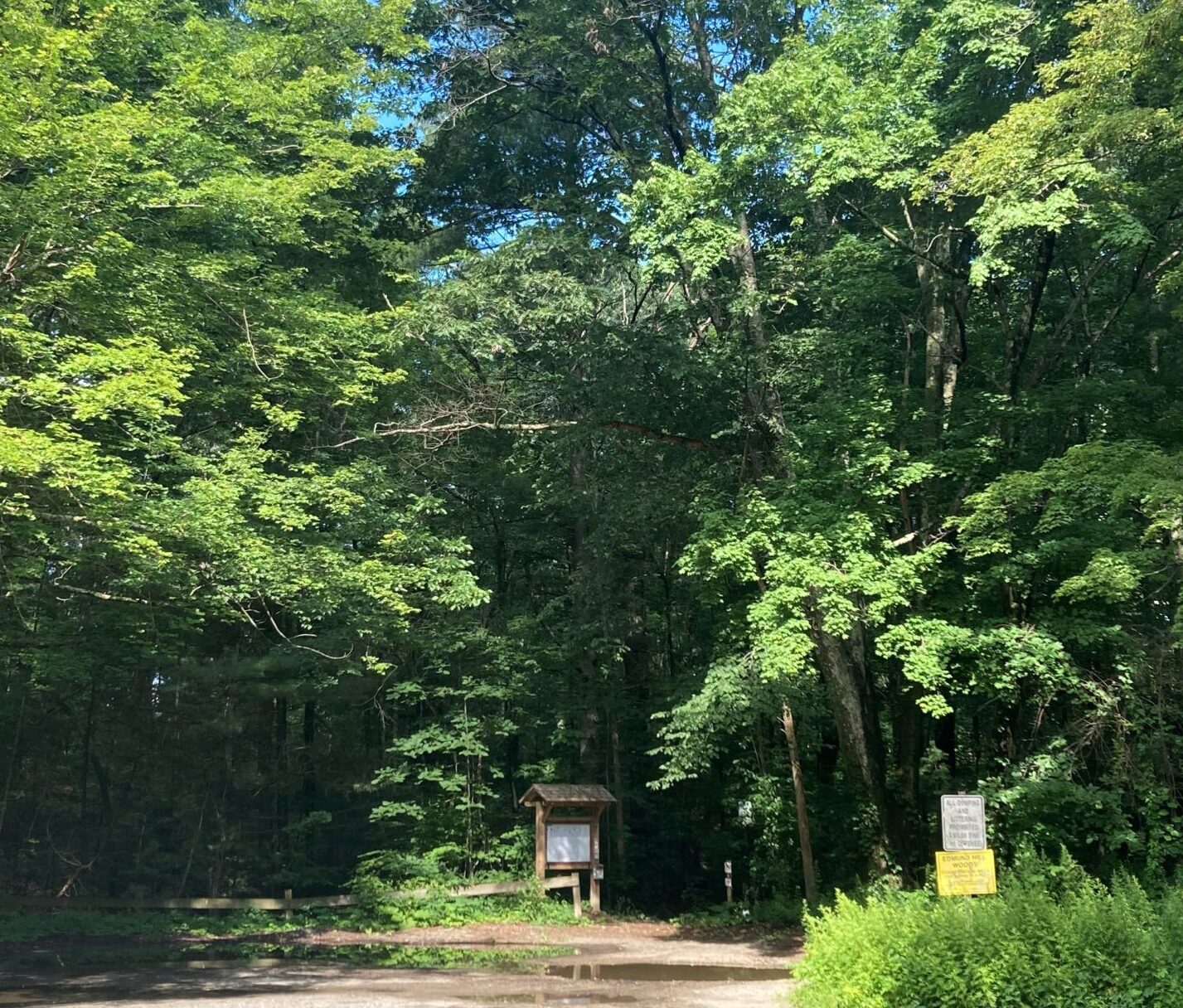Don’t tell me how educated you are, tell me how much you have traveled.
-Mohammed
Just off Rice Street, there is a graveled wedged clearing, designed to hold four or so parked cars, that pokes into the boundary of the Edmund Hill Wood — a 75-acre parcel of land that is new-growth forest and wetlands. A footpath, starting at the apex of the clearing, runs up into the woods and winds around into the foliage in just a few feet. As Waldo and I walk toward the path, I have the distinct impression that the forest is beckoning us to enter with outstretched arboreal arms.
Once on the path, Mother Nature embraces us in a welcoming blanket of life – we’re surrounded by a wide variety of trees — oaks, hickory and white pine, and various and numerous types of brush. We’re also serenaded by the chirping of birds and the buzzing of insects in accompaniment with the soft rustling of leaves. The glaring hot sunlight in the cloudless sky of the streets has been replaced by an all-pervasive deep shadow that calms and comforts as well as cools (although it is still quite warm). The leafy flora, tall and small, baffles the sound of passing cars and other city noises, more and more as we penetrate further into the forest. It isn’t long and the omnipresent sound of civilization has been diminished to the point of extinction and we can’t see anything but wilderness. Waldo and I have stepped into another world. A soothing, friendly world.
The path we follow is narrow, about two feet wide, made of dirt, beaten down by the passing of many feet, with an occasional exposed root. It is easy to follow as it winds its way up and down rolling hills and around and through small-bole trees. Waldo seems more animated than usual, as if he feels, “Now this is what I call a walk!” He glances at me with a look that I can only interpret as, “Why can’t we do this kind of thing more often?” Then his nose goes back to the ground as he explores this piece of planet Earth we’ve not visited before.
We haven’t gone far and we come across a 3×3 stake driven vertically into the ground. It’s about three feet high and on its top is the number “2” with a square of barcode. It marks one of 26 interpretive stations scattered along the trail. I missed numbers “0” and “1”, not knowing they existed. The barcodes can be read by a cellphone and connect to links that have entertaining videos on the geology, botany and history of the area.
They mention that the Northeast was largely cleared of trees during the 1700s and 1800s so the land could be used for farming. After that time, farmers moved west, where the land was more fertile, and trees were once again allowed to populate the area. For that reason, there are few trees around that have trunks bigger than two feet in diameter (trees grow at 0.1 – 0.2 inches in diameter a year). Having bushwhacked along deserted and unmaintained railbeds in the past, I can attest to it not taking very long before trees naturally start growing in places left to nature. Human reforestation is not required, and the trees in this forest are native.
The land itself, as is true of much of New England, was shaped by the advancement and recession of glaciers as recently as 70,000 – 15,000 years ago. Moraines and kettle lakes are common, as are long troughs created by glaciers pushing boulders (called glacial erratics) under the ice as they moved. Edmund Hill is a drumlin – a long hill left behind when a glacier recedes.
The forest is mostly hardwood, including American chestnut, birch and sassafras. I’ve seen birch and sassafras on the rail-trail, but I haven’t, knowingly, seen any chestnut there. Sassafras is an interesting tree in that most of its parts, leaves, bark and roots, are fragrant. Pioneers used the roots to make root beer, hence the name. There are, of course, also maples, white pine, oaks and all the other trees I’m used to seeing elsewhere.
There is a lot more information that can be gleaned from the interpretive posts than I mention here and a lot more to be learned about the natural world that surrounds us. Although I find all this stuff interesting, I think its greatest value is not in the knowing, but in the way learning it causes me to pay better attention to the world I live in. Waldo doesn’t need that. He’s naturally absorbed in whatever’s in front of his nose.
Waldo and I are short on time and have to turn around before we can explore much of the Edmund Hill Wood. For now, like the Wachusett aqueduct, it will have to go on the list of places to explore further. There are so many places on that list.
And that’s not a bad thing at all.



